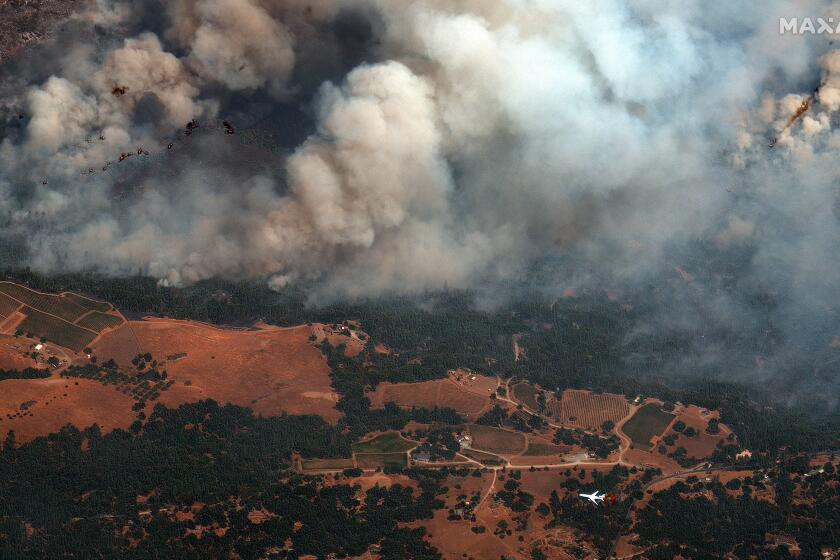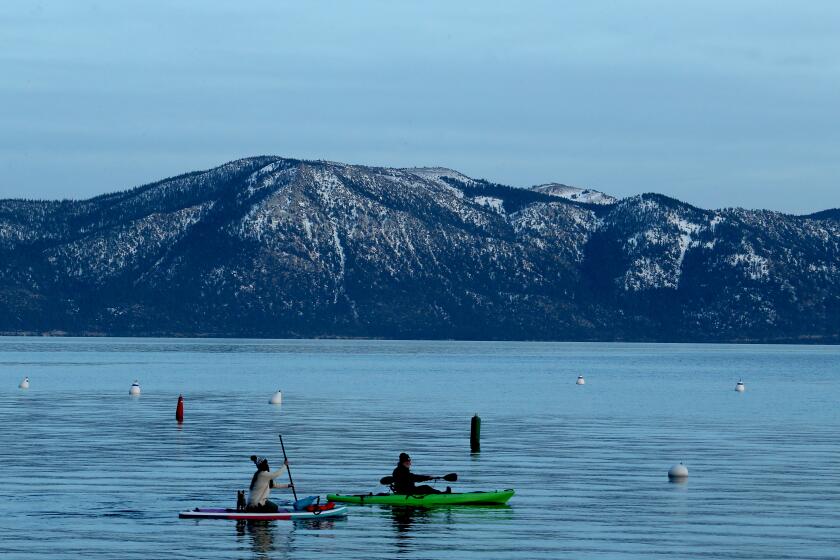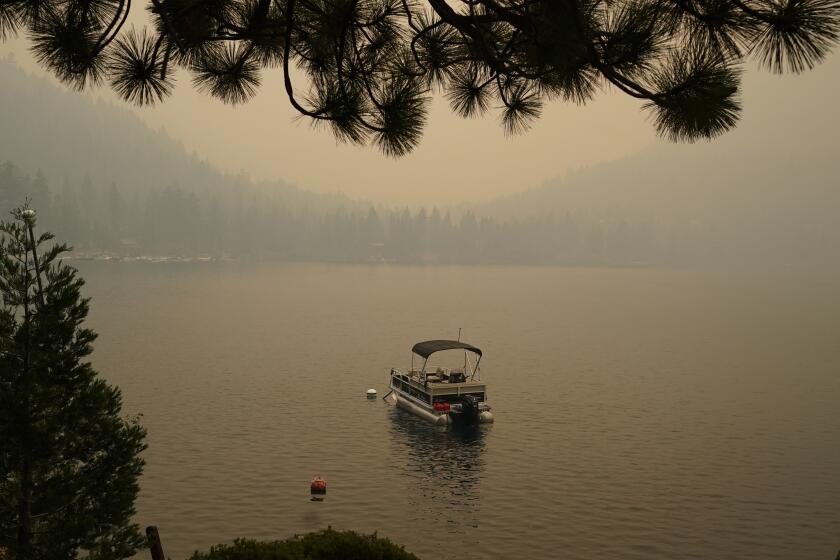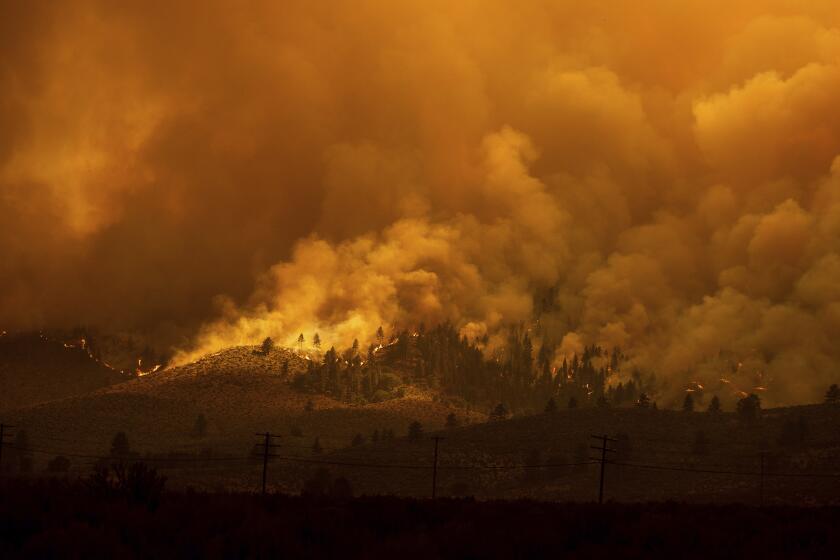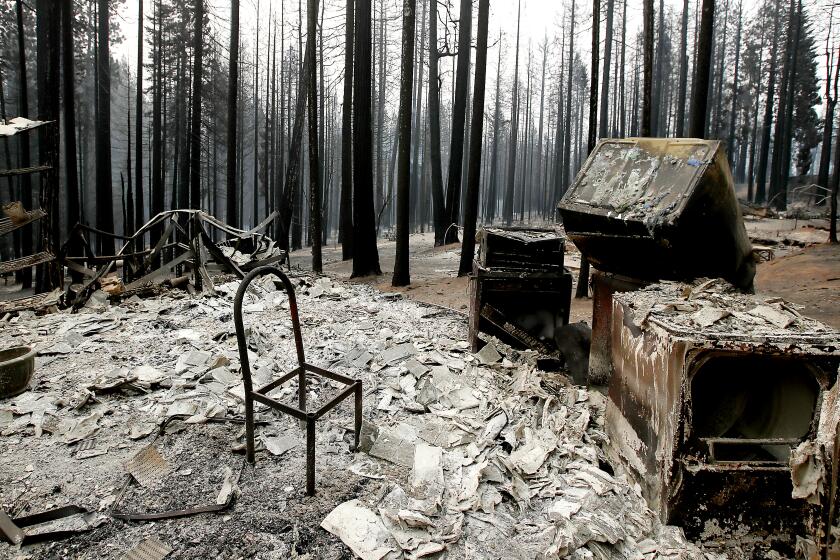A hellish summer in Lake Tahoe: Choked in smoke with the Caldor fire closing in fast

- Share via
SOUTH LAKE TAHOE, Calif. — The smell of burnt pine chokes the mountain air, but it’s the signs along the roadways that announce the early end of the summer season at South Lake Tahoe.
“FOREST CLOSED,” “NO CAMPING,” “NO BARBECUES.”
As the destructive Caldor fire creeps closer to the popular resort area, the boaters, hikers and beachgoers who typically descend on South Lake Tahoe ahead of Labor Day have all but vanished. And the lake itself — a blue jewel of California — is now choppy and dark under a dense blanket of smoke. The layer of ash in the area is thick enough in some places to leave footprints.
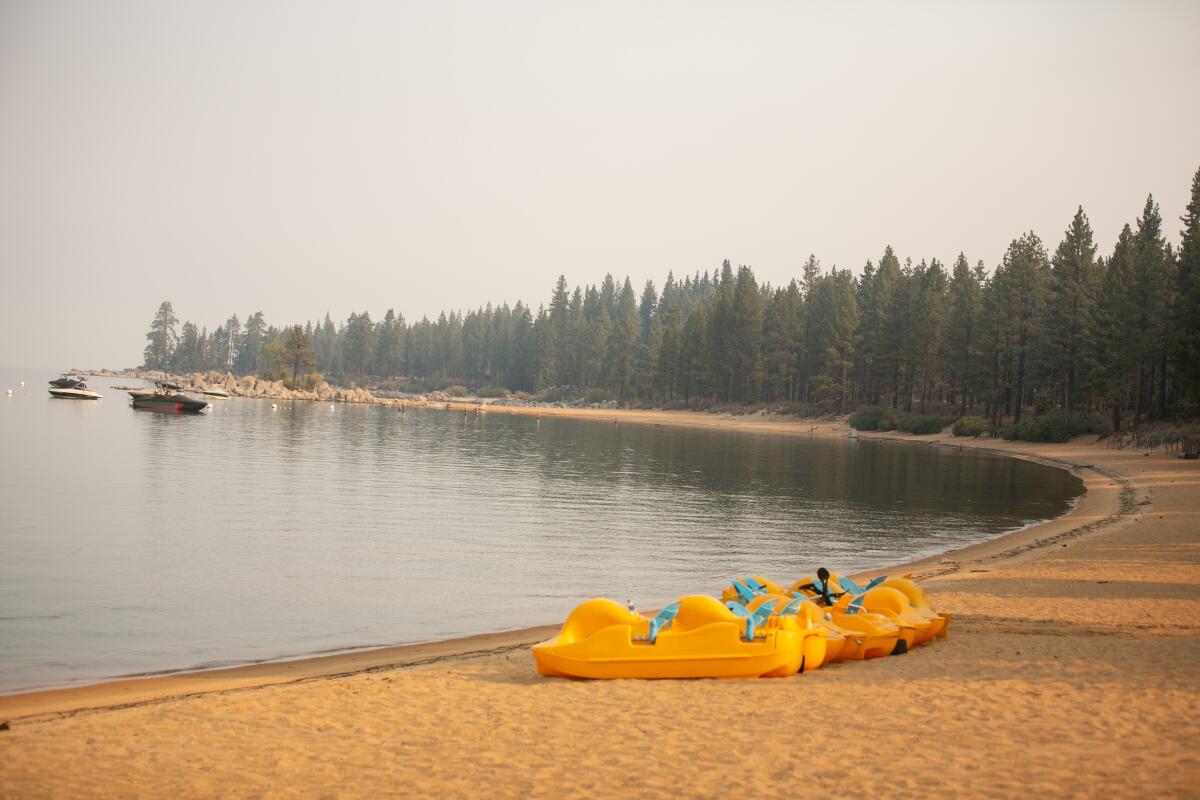
But it was only months ago that Tahoe offered an escape valve and relocation option for many during the COVID-19 pandemic — at one point becoming so overrun with tourists that officials wondered whether to ask people to stay away.
“We were inundated with people earlier this year,” said Tim Cain, who owns the El Fresco and Freel Perk restaurants near Christmas Valley, now under an evacuation warning. “Now, they’re just not coming.”
The Caldor fire is now less than 15 miles from South Lake Tahoe, and fire officials are pooling resources to stop it, authorities said.
Cain said even official stay-at-home orders issued during the pandemic couldn’t keep people from “sneaking over the hill” into Tahoe from Sacramento and the Central Valley.
But on Thursday, he and many other business owners had to close their doors early due to worsening conditions as the Caldor fire moved within 14 miles of the area.
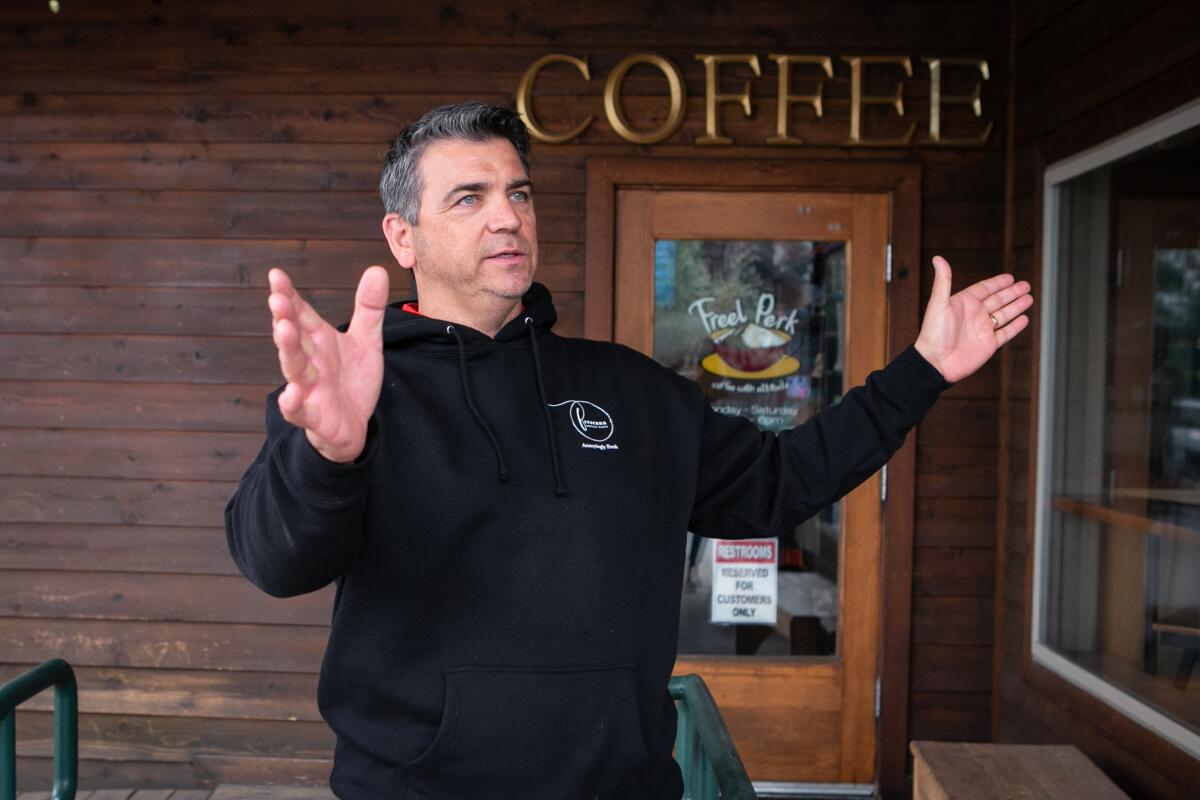
The smoke in the basin has gotten so thick — and the air quality so hazardous — that even Mike Papa, a 32-year resident who works at the Lake Tahoe Visitors Authority, said he had no choice but to advise people to stay away, a notion that runs counter to everything his office stands for.
“Everything is closed and it’s dangerous,” he told one caller on the phone. “You don’t want to be up here this weekend.”
Tourism has long been a huge part of South Lake Tahoe’s economy, and the pandemic supercharged everything, said Jarred Uppendahl, a Realtor and lifelong resident of the area. Vacation rentals and home sales soared as people looked to escape big cities and take advantage of remote work options.
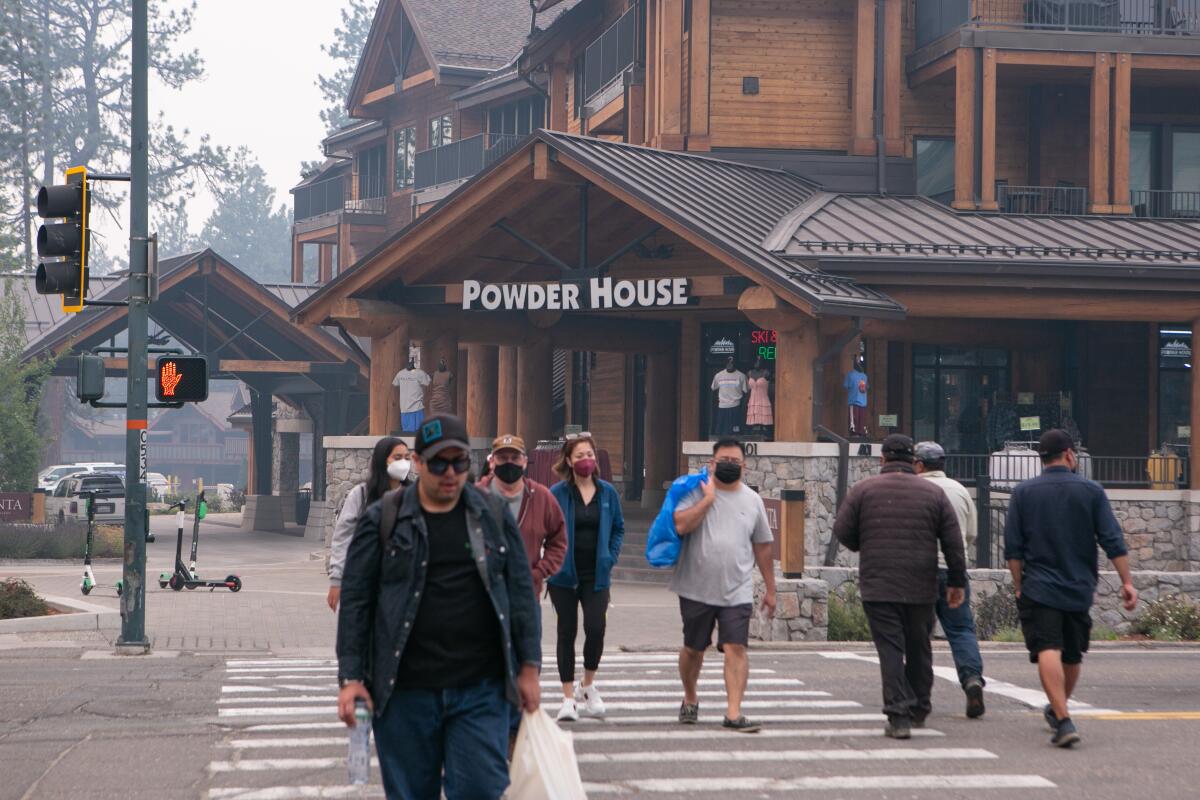
The boom exposed deepening divides in the community, some residents said, pitting locals who welcomed the explosion of newcomers against those who feared they were driving up home values and pushing people out of the area.
Yet there was little evidence of that boom Thursday, as Uppendahl and his family piled into their car and prepared to head out of town.
“It’s eerily quiet,” he said. “This street is usually full of kids riding bikes and playing.”
Indeed, most houses in the quiet residential area off of Pioneer Trail were shut tight against the smoke, which seemed to grow thicker and more bitter by the minute.
Officials have advised residents to stay inside with doors and windows shut to avoid the worst effects of the hazardous air. Many have already left.
Tahoe’s western shore will be partly reopened for the holiday weekend, helping the economy but renewing fears about COVID-19 and crowds.
Some said the situation was becoming unsustainable for Tahoe’s hospitality-based workforce, even before the smoke sent tourists scrambling.
One of those workers, sushi chef Benjamin Skeleton, 36, said he was very concerned that officials weren’t going to give him enough notice if he needed to evacuate from his mobile home community. He worried that they were more focused on preserving tourism than protecting the area’s frontline workers.
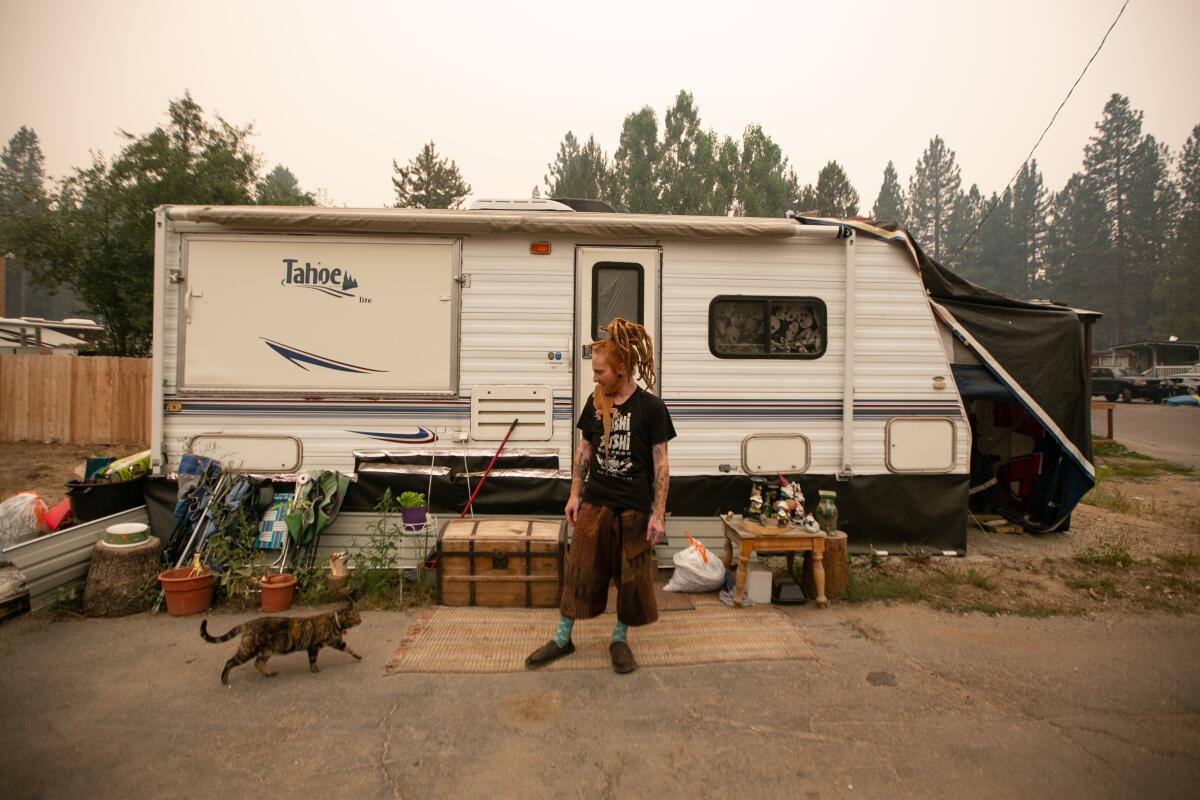
“That’s my biggest fear,” he said. “Should I have left yesterday?”
Like many other Tahoe residents, Skeleton said the conditions this week have been the worst he’s ever seen. He awakened one night coughing and gasping for air.
The ongoing climate crisis on top of the growing housing shortage has been enough to make him and his wife consider relocating to the Midwest, he said.
A spot fire threatened the community of Twin Bridges, about nine miles from the shore of Lake Tahoe, prompting evacuation warnings.
But officials on Thursday urged people not to panic, even as the fire’s red evacuation zone creeps closer to the area.
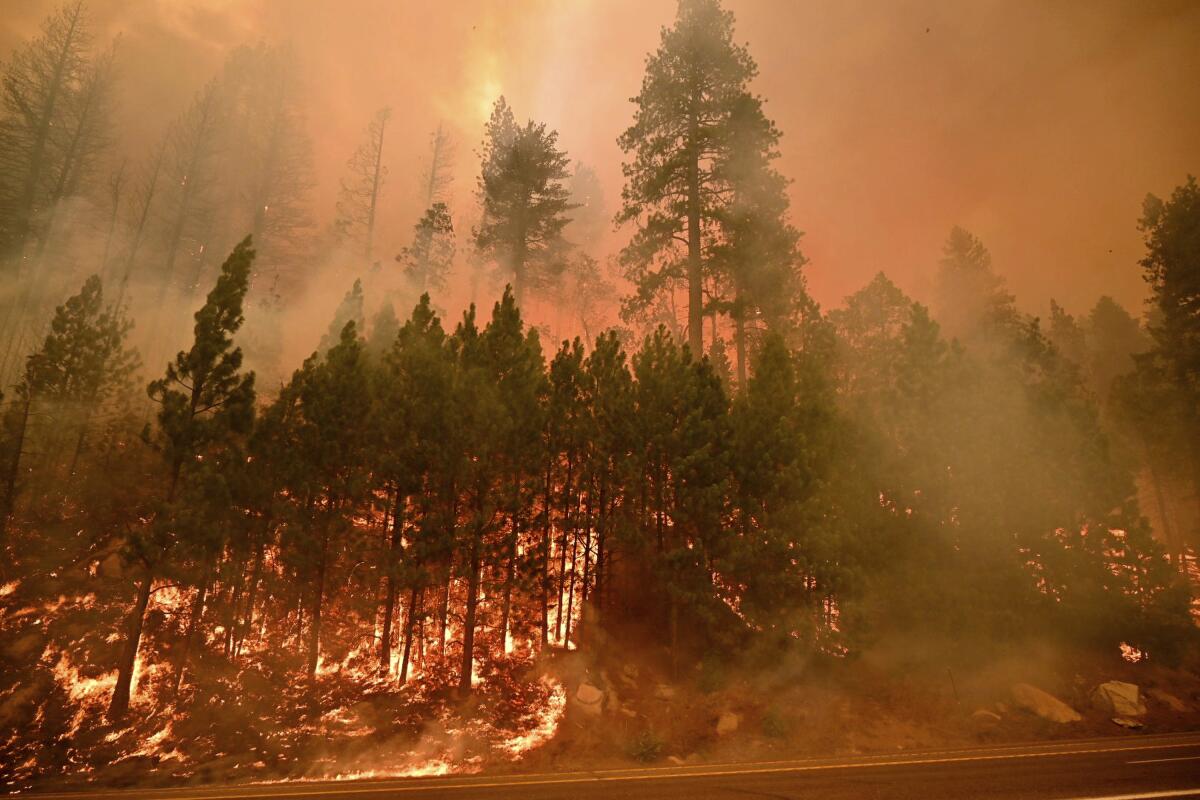
City Manager Joseph Irvin said he issued a local emergency proclamation to ensure South Lake Tahoe has the resources it needs amid rapidly changing conditions.
“We live at about 6,200-feet elevation in the mountains, where in the summertime and fire season, these are things that can arise,” he said. “The public health, safety and welfare of our residents is the No. 1 priority.”
Still, Irvin said, residents should be prepared to take action.
“As part of our emergency management preparations, we want to make sure that people always have a plan, and they should trust that we will always inform them with enough time and accurate information to keep themselves safe,” he said.
The 136,000-acre blaze, which ignited 12 days ago, is only 12% contained, according to the California Department of Forestry and Fire Protection. Nearly 3,000 personnel have been assigned to the fire, with many focusing on the northeastern perimeter closest to Tahoe’s south shore.
“There’s definitely potential” for it to get there, Battalion Chief Henry Herrera said Thursday, “but it still has a ways to go.”
Residents like Chuck Frazier, 71, are left with little left to do but watch and wait beneath the ominous orange-gray sky.
“I don’t know where I’d go if they told me to evacuate,” said Frazier, 71, who has lived in Tahoe for nearly 30 years. “I have no plan.”
The dryness of the vegetation, primed by both long-term drought and shorter-term heat waves, is making it easy for fires to ignite and even easier for them to spread.
And it’s not only residents who are on edge. Visitors — including many people who planned and saved all year for a trip to Lake Tahoe — were trying to make the best of a miserable situation.
“We planned this a long time ago, so we had to come,” said Taweewat Smitapindhu, who traveled to Tahoe from Thailand with his wife.
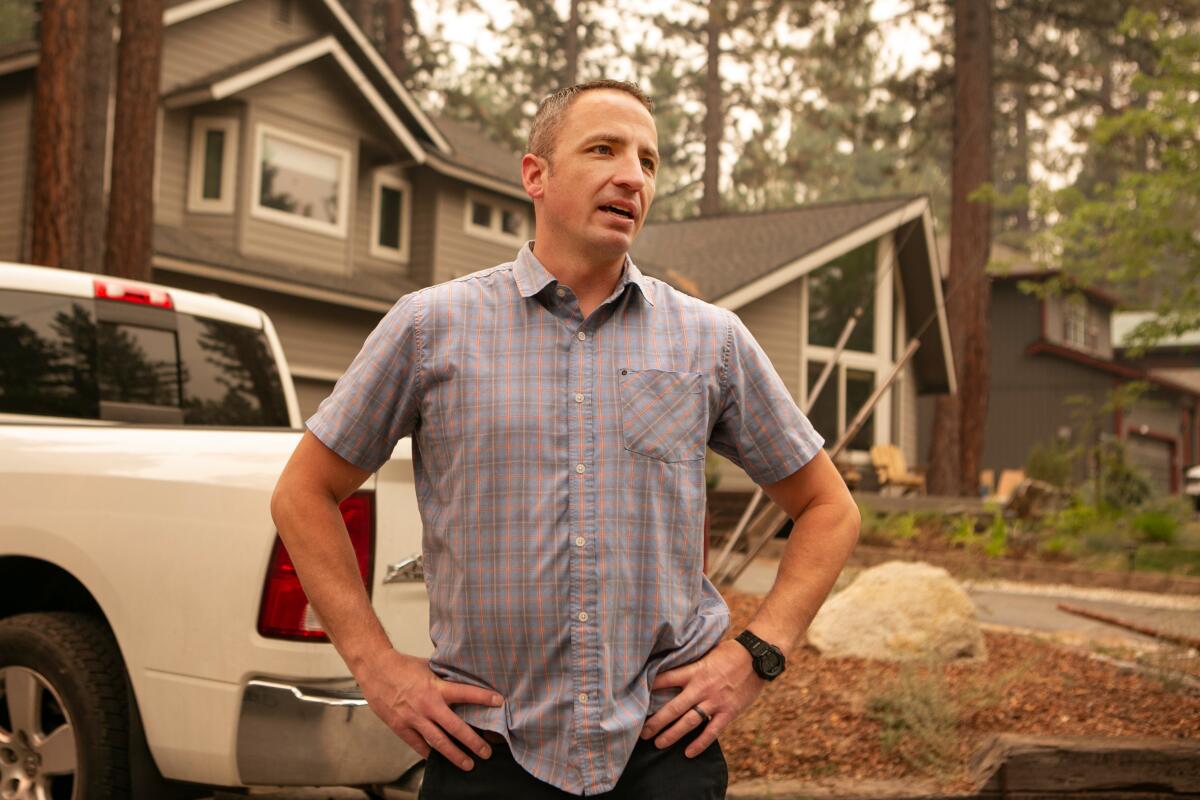
Donning face masks against the falling ash, the couple hoped to explore the lake’s edge on Thursday, even as their son kept calling from home to make sure they weren’t caught in the fire.
Others said they were throwing in the towel.
“Up until yesterday I was only worried about the smoke, but today I’m also worried about the fire,” said Lucy Watts, 61, who was visiting from Missouri.
She and her friend, Pam Johnston, said their hotel sent them a letter advising them that evacuation is a possibility and urging them to take medications and valuables with them anytime they left the room.
“All the things on our to-do list, like the Emerald Bay Cruise, are closed,” said Johnston, 61, noting that the falling ash has at times been so thick that she’s had to shake it out of her hair. “There’s not much reason to stay.”
For many residents in Northern California, summer has now become a time of dread due to extreme wildfires.
By Thursday evening, the anxiety was nearly as thick as the smoke, and the typically bustling Tahoe was instead more like a ghost town.
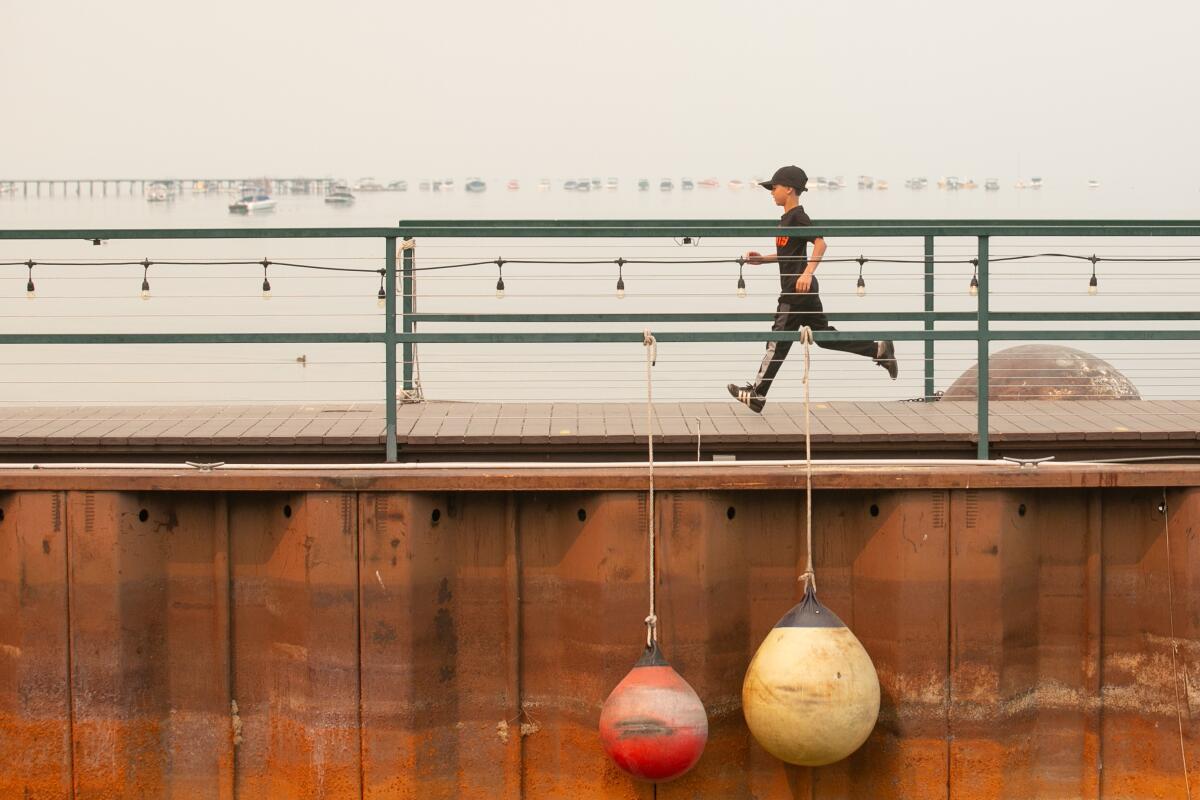
“South Lake Tahoe is a world-class tourist destination and our economy is built on that, but we are all in full agreement that now is not the time to come to the jewel of the Sierra Nevada,” said Irvin, the city manager, “and that rescheduling your vacation is the appropriate thing to do.”
Bobby Trask, manager of Powder House Pro Snow Shop, had set out dozens of rental bikes on the sidewalk Thursday, but said he was encouraging people not to take them because of the hazardous air.
Like many other long-time residents of the area, Trask, who lives in Meyers, couldn’t ever recall seeing so much smoke.
Before the fire, Tahoe had been busier than ever, he said, noting that the shoulder seasons have given way to year-long crowds. Now, he’s got a go-bag packed and ready in case of evacuation orders.
He and others noted that the fire is on the other side of a large granite ridge, which they hoped would act as a buffer to the flames.
But many residents, visitors and officials said the fire was much too close for comfort.
“The Caldor fire ... is now the No. 1 priority in the nation,” Cal Fire Chief Thom Porter said during a briefing Monday.
“It is that important,” he said. “It is knocking on the door to the Lake Tahoe basin.”
Times staff writer Lila Seidman contributed to this report.
More to Read
Sign up for Essential California
The most important California stories and recommendations in your inbox every morning.
You may occasionally receive promotional content from the Los Angeles Times.
